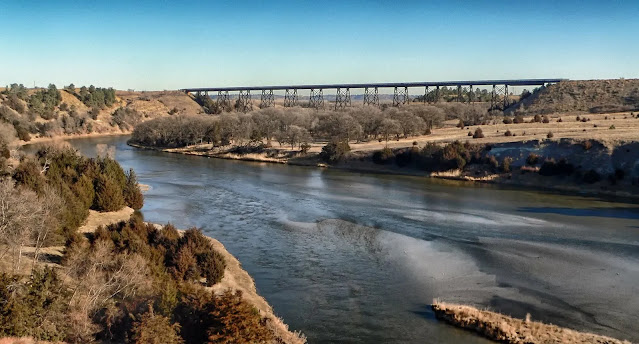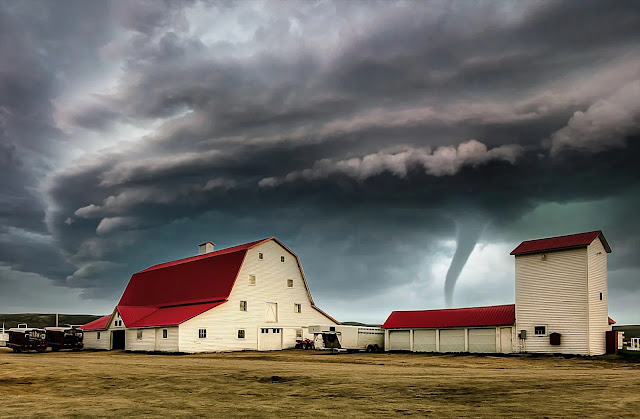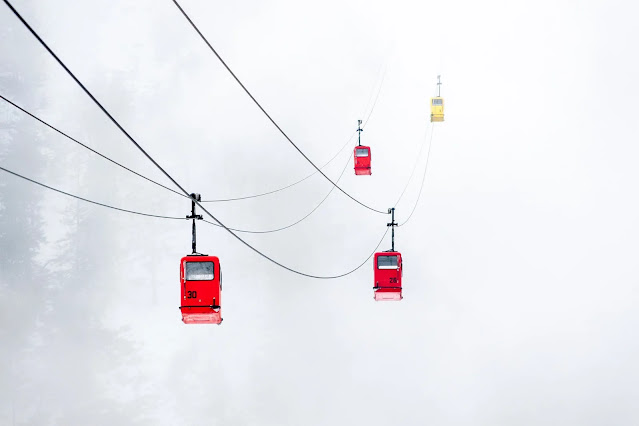Fact Of The Post
Did you know that the world’s first ski lift was invented in Nebraska in the 1930s?
To most people, Nebraska may be little more than blue skies and cornfields. As Nebraska is essentially an agricultural state, there may be some truth to that, but that’s not all Nebraska has to offer!
Some of the US’ most iconic products, such as Kool-aid and TV dinners, came out of Nebraska. Nebraska is also incredibly rich in pioneer history, which can be explored in the many museums dotted around the state.
Nebraska has a population of 1,934,408 people (as of 2019), making it the 37th most populous state. Nebraska is bordered by the states of South Dakota, Wyoming, Missouri, Kansas, Iowa, and Colorado.
With a total of 77,358 square miles (200,356 square kilometers) of land and water, it is the 16th largest state.
The capital of Nebraska is called Lincoln, which is situated in the far east of the state.
Here, we are going to read ten facts on Nebraska that might you should know if want to go there or live in it or near it.
Nebraska Facts And Information
💪💪💪 Let's Start Reading These Facts 😤😤😤
1. The name Nebraska comes from the Otoe name for the Platte River.
In the writings of Etienne de Bourgmont, the first white man in Nebraska, we can find the first mention of Nebraska (although he does refer to it as “Nebraskiér”).
In this case, he wasn’t referring to the region. Instead, he had written down the Otoe name for the river now known as the Platte River, a wide and shallow river he had spent some time at.
Nebraskiér, in Otoe, means wide and flat. Interestingly, the translated version became the name of the river, firstly “La Rivière Platte,” meaning “the flat river,” and then later the Platte River.
2. Nebraska used to be much larger than it is today.
When Nebraska Territory was founded in 1854, its borders looked very different from how they do today.
The western border was made up of the Continental Divide. The southern border was with Kansas Territory along the 40th parallel north of the equator. The eastern border was along the Missouri and White Earth rivers, and the northern border ran along the 49th parallel north of the equator.
Colorado Territory and Dakota territory were created with previously Nebraskan land, and it was only after this that Nebraska was admitted to the Union as a state in 1867.
3. Nebraska is pretty much right in the middle of Tornado Alley.
Tornado Alley is the rather appropriately named central region of the US. Due to a unique mix of climate conditions, it is affected by more than its fair share of extreme weather.
Nebraska lies in the heart of Tornado Alley and experiences severe weather such as tornadoes every spring and summer, and even sometimes in fall.
4. The world’s first ski lift was invented in Nebraska.
It’s a hilarious thought that a ski lift was invented in the Great Plains of America, but it’s the absolute truth!
The history of the ski lift goes back to the 1930s and a man named Jim Curran, an engineer working for the Union Pacific Railroad Company.
He was inspired to construct the ski lift in such a fashion after watching a mechanical contraption designed to transport bunches of bananas to and from cargo ships.
His design was initially blown off as crazy and potentially dangerous, but he persisted.
His designs were eventually approved, and the first two chairlifts in the world started operating at the Sun Valley ski resort in Idaho on December 21, 1936.
5. Most of Nebraska used to be underwater.
Between around 66 to 99 million years ago, during the Late Cretaceous period, about three-quarters of modern-day Nebraska was a part of an inland sea called the Western Interior Seaway, which stretched over more than a third of the entire United States.
This inland sea was filled to the brim with a range of marine reptiles that predates the dinosaurs, including great beasts such as plesiosaurs and mosasaurs.
Other monsters that lurked in these pre-historic seas included giant predatory fish such as the Xiphactinus.
Evidence of this inland sea can be found in the many fossils trapped within limestone cliffs throughout Nebraska.
6. Nebraska became a part of the US in 1803.
As per France’s original claim to the region, Nebraska was a part of French Louisiana until 1762.
At this point, it changed hands to New Spain as a consequence of France’s defeat in the Seven Years’ War.
Like France, New Spain had little interest in the region and did little else other than establish a few trading posts before handing it back to the French in 1800.
Shortly after this, in 1803, all of French Louisiana, including Nebraska, was sold to the US for a total of $15 million.
French Louisiana was initially renamed Louisiana Territory.
7. Frozen TV dinners were also invented in Nebraska.
The sons of a Swedish immigrant changed the frozen food game forever in 1952.
Their father, Carl A. Swanson, came to Nebraska at the age of 17, and through a lifelong series of successes, he managed to leave his sons with the largest food production company in the region when he died in 1949.
Soon after, Gilbert and Clarke Swanson decided it was time to move in a new direction and started toying with the idea of a frozen meal, with side dishes and all.
In 1952 they released their first frozen TV dinner, which included turkey, peas, and cornbread – all in a neat aluminum container.
They were an instant success, and although the product’s name changed at a later date, any kind of frozen meal is still commonly referred to as a TV dinner.
8. Kool-Aid was invented in Nebraska.
America’s favorite powdered drink mix wasn’t always a powder, though!
While Edwin E. Perkins invented the powdered form that we know and love today in 1927, his previous version was a syrup named “Fruit Smack.”
He changed the formula to a powder to improve the product’s transportability.
It seems Perkins had always been a bit of a backyard inventor and was known as a child to make various concoctions out of the ingredients he found in his mother’s kitchen.
9. Nebraska is home to the US’ largest indoor rainforest.
It’s something that you would never expect to find in a state like Nebraska. Nothing against Nebraska, of course, but a rainforest, really?
Tucked away in Omaha, Nebraska, lies the Lied Lunge, an indoor rainforest that covers a whopping 1.5 acres (that’s 6,070 square meters).
Inside, you can find an impressive variety of flora and fauna typically found in rainforests all around the world.
The Lied Jungle can be found within the Henry Doorly Zoo.
10. Nebraska was inhabited for thousands of years before Europeans arrived.
The first people to populate the Americas are believed to be the Paleo-Indians, who occupied the region sometime around the end of the Ice Age.
They traveled to North America from the far east of modern-day Russia via the Bering Strait, which was a land bridge between the two continents around 14,000 years ago.
Evidence of Paleo-Indian presence in the Great Plains, including Nebraska, has been found in the form of carefully crafted stone arrowheads, kill sites, and campsites.
By the time Europeans arrived, several well-established and advanced groups of people were living in the Nebraska region, including but not limited to the Pawnee, Otoe, Missouria, Omaha, Lakota, and Ponca.
11. Omaha was the first US capital of Nebraska.
In 1812 a part of Louisiana Territory, including modern-day Nebraska, was partitioned off and established as Missouri Territory.
It wasn’t until May 30, 1854, that Nebraska Territory was established, carved out of Missouri Territory.
When Nebraska Territory was founded, the capital was established in Omaha.
It was only in 1867 when Nebraska attained statehood that the capital shifted to the comparatively small and insignificant town of Lancaster, which was later renamed Lincoln.
12. A global tree-planting movement began in little old Nebraska.
Back in 1872, a man called Julius Sterling Morton put forward the idea of Arbor Day. He envisaged a holiday in which people of all kinds would take a break from their normal labor and plant trees.
His idea included prizes for both individuals and counties that planted more trees than anyone else.
Morton’s idea became a reality on April 10th that same year, and more than one million trees were planted on the first Arbor Day.
By 1885 Arbor day was shifted to Morton’s birthday, April 2nd, and made into a state holiday.
Arbor day is now celebrated in many countries around the world, with the date varying depending on the local climate.
13. A town in Nebraska once banned the sale of doughnut holes.
Every US state has its bizarre laws, and Nebraska seems to be no exception!
Back in the 1800s, a lawmaker in the town of Lehigh, Nebraska, decided that the sale of doughnut holes was simply not okay.
According to him, it was an outrage that bakers would try and sell the middle parts of donuts.
His opinion somehow ended up turning into a law that banned the practice.
Fortunately, the law was repealed, but you’ll still be hard-pressed to find doughnut holes for sale in Lehigh!
14. Nebraska wouldn’t have been settled if not for railroads.
The Great Plains were a harsh and unforgiving place, and the modes of travel were either on horseback, foot or in the back of a wagon if you were lucky.
This made settlement in the region incredibly difficult. Even if you did manage to start a farm, there was no easy way to transport your product back to the rest of the US.
The construction of the Union Pacific Railroad in the late 1800s did away with these issues, and Nebraska was rapidly settled by migrants from both the USA and abroad.
15. The first Europeans to claim Nebraska as their own were the French.
As we’ve established, people have lived in the region now known as Nebraska for thousands of years.
Unfortunately, that didn’t stop European explorers and colonizers from claiming the land as their own.
The first of such people was the Frenchman René-Robert Cavelier, Sieur de La Salle. He claimed all land that drained into the Mississippi River (as well as all of its tributaries) for France in 1682, despite having never been to the vast majority of the region.
It wasn’t until 1714 that another French explorer called Etienne de Bourgmont became the first white man to set foot in the region.
Nebraska Trivia Questions And Answers 😲😲😵
What is Nebraska famous for?
Ans: Nebraska is a midwestern state known for its farming, agricultural production, and natural attractions. These include plains, sand dunes, towering rock formations, and more. What is this? It's the 16th largest state in the nation and has the 37th largest population.
What is Nebraska's famous food?
Ans: Nebraska is probably best known for corn and beef -- don't worry, we have both in this lineup -- but it's also a state full of chefs aiming to serve much more than those two staples. We have Alton Brown's favorite burger in the nation. The Reuben sandwich.
What is Nebraska's flower?
Ans: Solidago, commonly called goldenrods, is a genus of about 100 to 120 species of flowering plants in the family Asteraceae. Most are herbaceous perennial species found in open areas such as meadows, prairies, and savannas.
Is Runza only in Nebraska?
Ans: Today there are 78 Runza locations in Nebraska, two in Kansas, and one each in Council Bluffs and Clarinda, Iowa, and Colorado.
What is Nebraska's state bird?
Ans: The western meadowlark is a medium-sized icterid bird, about 8.5 in length. It nests on the ground in open grasslands across western and central North America. It feeds mostly on bugs, but will also feed on seeds and berries.
😁😁😁 Thanks For Coming 😇😇😇
Sources:

















Comments
Post a Comment